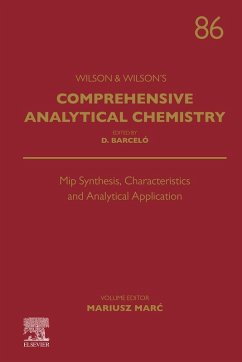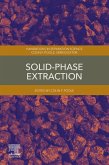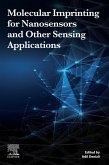Mip Synthesis, Characteristics and Analytical Application, Volume 86 in the Comprehensive Analytical Chemistry series, highlights advances in the field, with this new volume presenting interesting chapters on synthesis and polymerization techniques of molecularly imprinted polymers, Solid phase extraction technique as a general field of application of molecularly imprinted polymer materials, Advanced artificially receptor- based sorbents for solid phase extraction using molecular imprinting technology: a new trend in food analysis, Application of molecularly imprinted polymers in microextraction and solventless extraction techniques, Magnetic molecularly imprinted microspheres - analytical approach, Surface Imprinted Micro- and Nanoparticles, and much more.
- Contains a valuable source of information on the wide spectrum of application fields of molecularly imprinted polymers as a green sorption medium
- Describes the application potential of currently molecular imprinting technologies, associated with the solid phase extraction techniques, magnetic imprinted microspheres, sorbents in mass spectrometry, and imprinted polymer electrochemical sensors
Dieser Download kann aus rechtlichen Gründen nur mit Rechnungsadresse in A, B, BG, CY, CZ, D, DK, EW, E, FIN, F, GR, HR, H, IRL, I, LT, L, LR, M, NL, PL, P, R, S, SLO, SK ausgeliefert werden.




